Perhaps one of the most consistent finding I continue to come across as management consultant — being regularly exposed to different working realities including various types of projects, programs, businesses, processes and technologies across varying companies and industries — is that at the heart of it all, nothing is truly complicated; with the exception of people relationships which can often be very complicated.
Let me clarify; again, people relationship aside (which is of utmost importance and often a complicated aspect of business), when you analyse any seemingly complicated initiative and explore its every element, it gains clarity until at some point the relationship between these elements becomes clear, and a structured approach to the initiative begins to appear.
I promise you I will not go on without giving examples. Indeed, the purpose of this article — and hopefully more to follow — is to clarify such seemingly complicated areas and illustrate what I am saying. So with this article, let us consider ‘Integration’, with its notorious reputation of extreme complexity.
What is “Integration”?
In the business world, integration refers to the absorption of one organisation into another, often following a merger or acquisition.
Typically (but not necessarily), the larger company being the acquirer or the more dominant of the involved companies (let’s call it BigCo) aims to integrate the acquired or smaller company (let’s call it NewCo) into its organisation. This happens at each functional area such as sales, purchasing, IT, quality, and so on; so that no functional duplication remains from the merger or acquisition.
We all heard of large mergers or acquisitions followed by massive integration initiatives. Most of us can recall at least a couple of automotive mergers, since mergers and acquisitions are frequent phenomena in the automotive industry; a most recent example is FCA/Peugeot merger. But it is important to know that integration, be it the outcome of a merger or acquisition happens in all types of organisations down to the smallest and family owned. Indeed, this is probably the most common type of integration given that most acquired businesses (by other businesses) are often start-ups with no more than few hundred employees; and they are often acquired for their innovation and creativity.
Integration is often necessary so that NewCo can function efficiently within BigCo, therefore achieving the expected benefits from the acquisition.
For the sake of simplicity in the remainder of the document, I will refer to ‘acquisitions’ rather than ‘mergers and acquisitions’; although everything noted applies to both mergers and acquisitions alike.
What are the main stages of Integration:
1. Understand the acquisition business case
The business case answers the why behind NewCo’s acquisition, it is the expected benefits from the acquisition.
Taking into account the various factors that constitute the business case including synergies, gained competitiveness and future strategy for the combined organisations, we will need to outline these in terms of:
Products and/or services gained and how they can help gain new markets and/or higher competitive advantage.
Geographical markets acquired and how they fit into BigCo’s strategy.
Clients gained and how they fit into BigCo’s strategy.
The outcome of the above analysis would be high-level roadmap of how each of the products, markets and clients are to be approached over the integration period; so that at the end of that period, the conditions that satisfy the business case, are achieved.
2. Identify the Business Model
Taking the achievement of the above roadmap as our prime objective, we can now move to identifying the most suitable integrated business model to deliver it.
Image for post
A logical and friendly method of outlining the business model is the popular Osterwalder’s business model canvas.
However, regardless of what canvass, template or other business model illustration is utilised, what is key is that it clearly shows how the integrated sales and business development organisation will be structured.
3. Understand the Organisation
Here we need to gain as much knowledge as possible of NewCo’s organisation.
While knowing the business case helps us direct our integration efforts towards maximising the acquisition value, understanding the details of NewCo’s organisation allows us to plan and execute the integration with minimum negative disruption to people and to the business.
Image for post
Know the People: Who does what and who are the key inventors and leaders? Are there brilliantly unrecognised leaders acting as a focal point for much of the successful activities in NewCo?
Know the Culture: Every organisations harbour 2 major cultures: the Organisational Culture and the National Culture:
Image for post
The first is that which have evolved from the early days of the organisation through its leaders. Although the organisational culture does not change rapidly and takes time to set, it is an element that is periodically analysed and actively tuned top-down by the organisation’s leadership.
The second is the national culture and depends on the nation where the organisation reside. In multinational organisation, this will differ from location to location.
Culture analysis will require cultural expertise, and the help of external culture professionals is strongly advised as internal attempts to work with culture are always subjective to the very culture making those attempts.
4. Outline the current and target Operating Models (OMs)
The operating model is a model of the company, its working practices and processes, its people, and the technology and assets that supports its operations.
For the purpose of change programs such as NewCo’s integration, 2 operating models will need to be developed;
Current OM; showing how NewCo functions currently operate.
Target OM; based on how NewCo is to be positioned within BigCo and showing how the same functions would operate after integration.
The operating model is often analysed in terms of processes, organization and technology, whereby:
Processes outlines the functions’ processes, procedures, information flow, performance levels and operating costs.
Organisation outlines the organisational structure and reporting, staffing levels, roles, responsibilities, and skills.
Technology outlines the IT systems, tools, equipment, machinery, vehicles and buildings.
The purpose of developing both current and future OMs is to identify the gap between them for each function in terms of processes, organisation and technology. Closing or bridging this gap will be the technical objective of the integration.
5. Plan transition
Image for post
Here we identify the effort and budget requirements for the integration. This will entail elaborate planning of the various projects and initiatives to close or bridge the gap between the current and target operating models.
As importantly, we need to anticipate and plan the ‘Business Change’ being the organisation or process change necessary to render the projects’ outputs functional and beneficial.
This typically include training employees on new processes and system and hiring or providing extra support where needed; as well as recognising upstream and downstream impact of the change (on clients, suppliers, internal departments, etc), and taking necessary action to manage them.
Last but in no way least, we must plan for business as usual (BAU). That is, being able to maintain ongoing business activities during the integration period and not discover at crucial points that we have spread our resources too thin.
6. Execute and govern integration
Execution is the implementation of the above plans which had risen from the gap between NewCo’s current and target operating models, which in turn had risen from the acquisition business case and understanding of NewCo’s business model and organisation.
While planning flows from the ‘why’ (business case) to the ‘how’ (project and change plans), execution flows from implementing the ‘how’ (project and change plans) towards achieving the ‘why’ (business case).
Governance for such change programs will require a structured PMO to coordinate, to keep track and to manage the various activities; as well as produce the various stakeholders’ communications and reports.
Ofcourse, there is far more to integration than noted in this brief article and I have tried to simplify as much as possible. Further, I mainly noted the technical aspects of an integration program and wrote little about the people aspect; but then again, I wanted to stay with the simpler aspect and as noted at the start of this article, people are the only truly complicated aspect when it comes to change.
Image for post
So how can organisations best handle integration after an acquisition or a merger? Is it best to do it themselves given the required expertise in their own business, operations and processes, or should they resort to consultants, or both?
One can make reference to transformation and change programs and note that the answer depends on their program management know-how.
So if the organisation is accustomed to change programs and harbour experienced program managers, then they can do it themselves. Right?
I would say that when it comes to integration, there is a particular element that renders the intervention of external integration professionals of significant benefit, even if the organisation is proficient in change programs; and that being the presence of two differing groups from different companies and different perspectives that need to adjust and to accept each other when merging into one reality.
This means that an assigned external professional that would act as — and be perceived as — an objective integration manager and leader, can go a long way in mediating and negotiating misalignments and conflicts of interest, and helping BigCo and NewCo recognise each other’s point of view and work together to reach a solution that caters for the wider good of the integrated organisation and its people.
Needless to say, such integration professional will require mature people and cultural skills, alongside all that goes with it (negotiation, mediation, conflict resolution, aligning perspectives, etc.). The ideal integration professional must be a professional program and change manager with long and mature experience of leading the people aspects of change.




